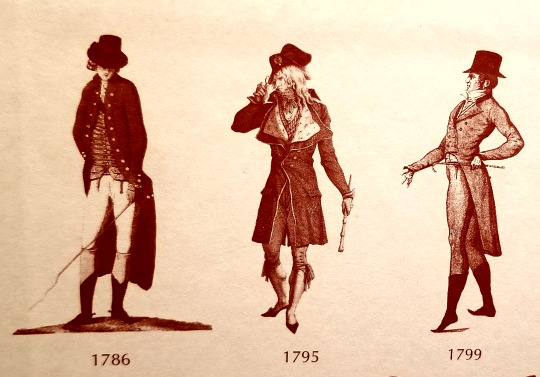#my military uniform books don't touch on baggy seats
Note
I have been told by @benjhawkins that you are a good person to ask about Western men’s fashion in the 18th century.
I’m hoping to phrase this as delicately as possible: why were men’s breeches so unappealingly baggy in the seat while the thigh was so carefully tailored to fit the leg?
Thank you for any insight you can give!
For reference: the fellow in red

Hello and thank you for the intriguing question! I'm more of an 1810s person (hence the perpetual Napoleonic/War of 1812 vibes around here), but always willing to attempt to answer fashion history questions, especially ones about the early-mid 19th century. I'm not a professional dress historian, just interested in the subject.
I turned to Farid Chenoune's A History of Men's Fashion, which doesn't comment much on the tailoring of fashionable men's breeches except to emphasise their tightness. The Mémoires of one Baron de Frénilly are quoted:
Breeches, to be fashionable, had to be so tight that one needed help to get into them, skill and prudence to walk and especially to dance in them, talent to sit down or bend over with them—any heedless movement exposed one to the risk of disaster.
Chenoune has a visual timeline for western men's fashion printed on the endpapers of his massive book, and these are the earliest ones (he begins in the era of 1760-1850):

Tight breeches, of course, and also long coat skirts. It's the latter that makes me think of @/ellie-valsin’s masterpost on 1830s men’s bottom layers. It’s significantly later than the time period that you’re asking about, but it specifically addresses men’s trousers and breeches cut with a baggy seat, and proposes fluffing out the coat skirts as the main reason, fashion-wise (and to give the poor man just the slightest bit of ease in his tight pants, maybe).
Norah Waugh’s book The Cut of Men's Clothes 1600-1900 has many quotations from contemporary sources, and one attributed to Town and Country Magazine of 1772 has this to say about foppish Macaronis:
They make a most ridiculous figure with hats of an inch in the brim, that do not cover but lie upon the head, with about two pounds of fictitious hair, formed into what is called a club, hanging down their shoulders as white as a baker’s sack. The end of the skirt of their coat reaches the first button of their breeches which are either brown-striped or white, as wide as a Dutchman’s
Possible evidence for padding out the coat skirts? Plenty of contemporary sources attest to men not wanting to appear too thin, e.g. using calf padding. In the next section of The Cut of Men's Clothes, focused on the 19th century, Waugh writes, “Whereas the eighteenth century was characterized by its attention to cut, the nineteenth was notable for its concentration on fit.” Did tailors move away from baggy behinds due to improving techniques? (And after the 1830s, the silhouette for men starts moving away from an hourglass to boxy mid-century looks).
Unfortunately all of the period tailoring manuals that come to mind are 19th century vintage, but maybe one of my readers is more knowledgeable about the Georgian Gentleman’s baggy breeches. (Please chime in!)
#ask#fashion#fashion history#historical men's fashion#men's fashion#breeches#georgian fashion#18th century#1780s#1790s#my military uniform books don't touch on baggy seats#but one can assume that officers would follow the civilian fashion#dress history#farid chenoune#norah waugh#pentecostwaite#asks
91 notes
·
View notes